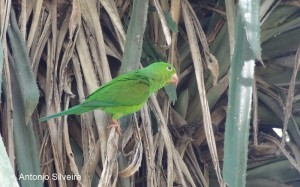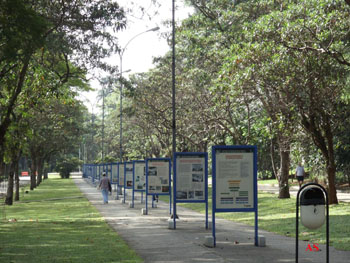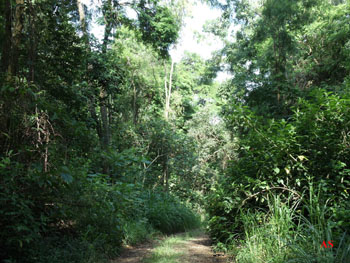Lista de aves (Birdlist) do Instituto Butantan – São Paulo-capital-SP

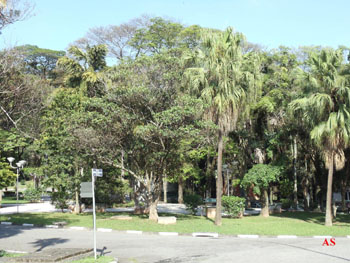
É um local muito conhecido no Brasil e no exterior pela sua excelência técnica em sua área de atuação, sendo, aliás, um dos poucos institutos neste ramo científico. Por tudo isto é muito visitado, onde as pessoas procuram, principalmente, sua exposição de animais vivos (Museu Biológico) e o serpentário.
Apesar de todas as suas instalações, o local conta com cerca de 62 % de sua área muito arborizadas, tanto com plantas exóticas, quanto com vegetação nativa (Mata Atlântica), o que oferece um ótimo local para a prática de observação de aves (birdwatching; birding).
Há uma área verde proibida ao público, mas na área de visitação pública, existe uma significativa área verde, suficiente para boas observações de aves. Além disso, por ser um local plano com ruas asfaltadas e praças, pode ser percorrido facilmente pelo observador, inclusive por idosos. Há muitos anos havia três lagos artificiais na área reservada, mas foram aterrados. Existe uma lanchonete e banheiros, o que pode trazer mais conforto ao observador, que pode assim passar várias horas no local, podendo assim conhecer mais sobre os ofídios ao mesmo tempo em que pode se deleitar praticando a observação de aves.
Daí o motivo da elaboração por nós de uma lista de sua avifauna, para ajudar o birdwatcher nesta agradável modalidade de lazer, que o visita.
Estivemos no local algumas vezes, por algumas horas, principalmente a partir do segundo semestre de 2010, onde observamos a ocorrência de 74 espécies, cuja lista encontra-se a seguir. Deve-se observar que as visitas foram diurnas daí a não constatarmos suas aves crepusculares e/ou noturnas. E como não existe espelhos d’ água no local, não há presença de aves aquáticas. por Antonio Silveira.
ENGLISH————–
The Butantan Institute is located in the neighborhood of the same name, in the western city of São Paulo, having area of 80 hectares, home to many administrative buildings, the snake, etc.The museum is an institution of animal studies poisonous, especially snakes (snakes) and producer of anti-snake serum.
It is a place well known in Brazil and abroad for its technical excellence in their area, moreover, is one of the few institutes in the field of science. For all this is much visited, where people seek primarily their exposure of live animals (Biological Museum) and the snake.
Hence the reason for us making a list of your bird, the birdwatcher to help this delightful form of recreation, that visit.
We were on the spot sometimes for a few hours, especially from the second half of 2010, where we observe the occurrence of 74 species, is listed below. It should be noted that the visits were not there the diurnal birds constatarmos their crepuscular and / or night. And as there is no water mirrors in place, there is no presence of waterfowl. by Antonio Silveira.
———–
Lista preliminar e cumulativa da avifauna do Instituto Butantan, São Paulo/SP. Brasil. por Antonio Silveira
——–
Preliminary and cumulative birdlist of the Butantan Institute, São Paulo / SP.Brazil. by Antonio Silveira
—-
Nomes: científico, português, inglês / Names: Scientific, Portuguese, English
CATHARTIDAE
Coragyps atratus; Urubu-de-cabeça-preta; Black Vulture (abaixo- below)
ACCIPITRIDAE
Rupornis magnirostris; Gavião-carijó; Roadside Hawk
Parabuteo unicinctus; Gavião-asa-de-telha; Harris’ Hawk (P) (3-4-2014) (abaixo- below)
FALCONIDAE
CUCULIDAE
Piaya cayana; Alma-de-gato; Squirrel Cuckoo
TYTONIDAE
Tyto alba; Coruja-da-igreja; Barn Owl *
STRIGIDAE
Megascops choliba; Corujinha-do-mato; Tropical Screech-Owl *
Asio clamator; Coruja-orelhuda; Striped Owl *
Eupetomena macroura; Beija-flor-tesoura; Swallow-tailed Hummingbird
Florisuga fusca; Beija-flor-preto; Black Jacobin
PICIDAE
Picumnus temminckii; Pica-pau-anão-de-coleira; Ochre-collared Piculet
Veniliornis spilogaster; Picapauzinho-verde-carijó; White-spotted Woodpecker
Celeus flavescens; Pica-pau-de-cabeça-amarela; Blond-crested Woodpecker (abaixo- below)

Dryocopus lineatus; Pica-pau-de-banda-branca; Lineated Woodpecker
FURNARIIDAE
Furnarius rufus; João-de-barro; Rufous Hornero (abaixo- below)

Synallaxis spixi; João-teneném; Spix´s Spinetail
TYRANNIDAE
Elaenia flavogaster; Guaracava-de-barriga-amarela; Yellow-bellied Elaenia
Camptostoma obsoletum; Risadinha; Southern Beardless-Tyrannulet
Hirundinea ferruginea; Gibão-de-couro; Cliff Flycatcher
Lathrotriccus euleri; Enferrujado; Euler’s Flycatcher
Fluvicola nengeta; Lavadeira-mascarada; Masked Water-Tyrant
Machetornis rixosa; Suiriri-cavaleiro; Cattle Tyrant
Myiozetetes similis; Bentevizinho-de-penacho-vermelho; Social Flycatcher
Pitangus sulphuratus; Bem-te-vi; Great Kiskadee (abaixo- below)

Myiodynastes maculatus; Bentevi-rajado; Streaked Flycatcher
Megarynchus pitangua; Neinei; Boat-billed Flycatcher (abaixo- below)

Tyrannus melancholicus; Suiriri; Tropical Kingbird (VOZ-VOICE)
Tyrannus savana; Tesourinha; Fork-tailed Flycatcher
Empidonomus varius; Peitica; Variegated Flycatcher (abaixo-below)
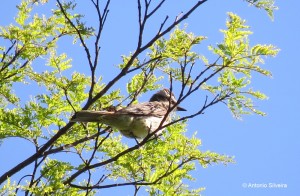
VIREONIDAE
Cyclarhis gujanensis; Pitiguari; Rufous-browed Peppershrike (VOZ-VOICE)
Vireo chivi; Juruviara; Chivi Vireo (VOZ-VOICE)
HIRUNDINIDAE
Pygochelidon cyanoleuca;Andorinha-pequena-de-casa;Blue-and-white Swallow
TROGLODYTIDAE
Troglodytes musculus; Corruíra; Southern House-Wren (abaixo- below) (VOZ-VOICE)
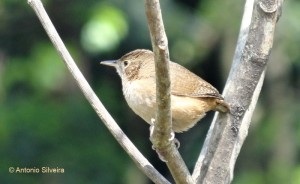
TURDIDAE
Turdus flavipes; Sabiá-una; Yellow-legged Thrush (VOZ-VOICE) (abaixo- below)
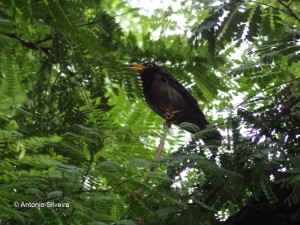
Turdus rufiventris; Sabiá-laranjeira; Rufous-bellied Thrush (abaixo- below)

Turdus leucomelas; Sabiá-barranco; Pale-breasted Thrush (abaixo- below) (VOZ-VOICE)

Turdus amaurochalinus; Sabiá-poca; Creamy-bellied Thrush
MIMIDAE
Mimus saturninus; Sabiá-do-campo; Chalk-browed Mockingbird
COEREBIDAE
Coereba flaveola; Cambacica; Bananaquit (abaixo- below) (VOZ-VOICE)

THRAUPIDAE
Thlypopsis sordida; Saí-canário; Orange-headed Tanager
Tangara sayaca; Sanhaçu-cinza; Sayaca Tanager (abaixo- below)

Tangara palmarum; Sanhaçu-do-coqueiro; Palm Tanager
Tangara cayana; Saíra-amarela; Burnished-buff Tanager
Conirostrum speciosum;Figuinha-de-rabo-castaho;Chestnut-vented Conebill
Dacnis cayana; Saí-azul; Blue Dacnis
EMBEREZIDAE
Zonotrichia capensis; Tico-tico; Rufous-collared Sparrow (abaixo- below)

PARULIDAE
Parula pitiayumi; Mariquita; Tropical Parula
Basileuterus culicivorus; Pula-pula; Golden-crowned Warbler
ICTERIDAE

FRINGILLIDAE
Euphonia chlorotica; Fim-fim; Purple-throated Euphonia
ESTRILDIDAE
Estrilda astrild; Bico-de-lacre; Common Waxbill
PASSERIDAE
Passer domesticus; Pardal; House Sparrow
Obs: ordem sistemática e nomes de acordo com o Comitê Brasileiro de Registros Ornitológicos. Listas das aves do Brasil. Versão 18/10/2010 – 9ª edição (http://www.cbro.org.br).
Instituto Buntantan
Avenida Vital Brasil 1.500, Butantan, Zona Oeste, São Paulo,Brasil. http://www.butantan.gov.br
————–
Birds of Butantan Institute,S.Paulo, Brazil. by Antonio Silveira
——————————————————————
——————————
Antonio Silveira: Lista inserida em 13/01/2011. Última atualização(last update): 8.4.2015. 19-10-2016.













